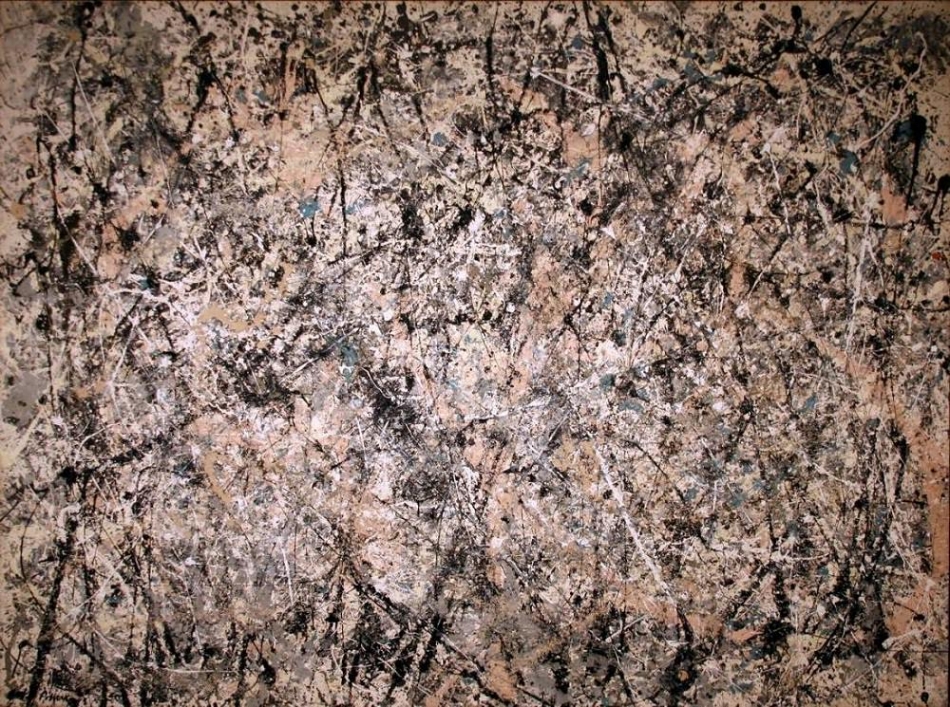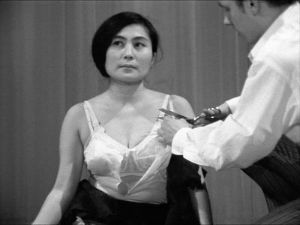On Saturday, October 28, as a part of the 2017 Arlington International Film Festival, 13FOREST Gallery hosted a post-screening reception for the film Everybody Knows...Elizabeth Murray, featuring a Q&A with the film's director Kristi Zea. Gallery Director Caitee Hoglund gave a short talk before the Q&A that situated Murray's work within the larger context of art history in the second half of the twentieth century. You can read the full text of Hoglund's talk below.
Caitee Hoglund and Kristi Zea
After watching the film Everybody Knows...Elizabeth Murray I did some research on the artist, because in spite of the assertion of its title, until I saw the documentary I did not actually know Elizabeth Murray or her work. In all my years of art history education, she had never been mentioned. I found a review of an exhibition of Murray's work that seemed to encapsulate many of the challenges that Murray faced as an artist, and perhaps explained why I had never heard of her before. The critic categorized Murray as an artist "whose approach is personal and intuitive rather than theoretical or art-historical." In that simple dichotomy, the critic sums up an argument that has been used to marginalize the work of women in the arts since art history began as a discipline. In the hierarchy of "good art," personal and intuitive will always come second to theoretical and art-historical, and how could the work of a woman be anything but feminine, and therefore personal and intuitive?
Jackson Pollock, Lavender Mist, 1950
Elizabeth Murray came into her career as an artist at a time when painting was a particularly fraught medium. After the domination of Abstract Expressionism in the forties and fifties, when Jackson Pollock's splattered canvases and Mark Rothko's vast color field paintings were considered the pinnacle of theoretical advancement, artists began to turn away from painting completely. The sixties and seventies witnessed an explosion of experimental movements that abandoned the making of precious, individual art objects.
Pop artists like Andy Warhol mass produced images of mass produced goods, while conceptual artists rejected physical objects completely, embracing performance and language-based work. In deciding to become a painter, Murray had to take on the difficult task of re-establishing the medium after it had been whittled away by decades of apathy from critics and theorizers.
Andy Warhol, Campbell's Soup Cans, 1962
Yoko Ono, Cut Piece, 1965
Elizabeth Muray, Painter's Progress, 1981
Looking at Murray's work, we can see all the ways that she was navigating the complicated history that painting had acquired in recent decades. She began working in the style of Minimalism that was popular after she finished school, but eventually abandoned clean lines and geometry for the organic, balloon-like, colorful forms that would characterize the height of her career. Her work challenged many of the theoretical dichotomies that art historians had imagined for painting; while her work included recognizable household imagery, the images were fragmented and abstracted in ways that often rendered them unrecognizable at first glance. She extended this interest in abstraction to her canvases, disrupting the picture plane with complex, sinuous constructions that supported her vibrant and colorful imagery. The size of her work was monumental, while her subject matter was familiar and personal. Her work exhibits an intense focus on color, shape, and line, while also conveying personal meaning drawn from her own life. Murray's paintings were difficult to categorize because she was crossing well-established boundaries between formalism, humor, and the personal. Her refusal to limit herself to one interest or another made her an incredibly courageous artist, but also subjected her to the gendered criticisms that typically plagued women in the arts.
By insisting that Murray's work came from a place of intuition rather than intellect, the critic I mentioned earlier reinforced the harmful stereotype that women are primarily emotional, intuitive beings, as opposed to their male counterparts who are dominated by reason and logic. This assessment not only undercuts Murray's education and keen awareness of the historical moment in which she was working, but serves to place her at a permanent disadvantage in the hierarchy of art history. Over and over, reviews of Murray's work insisted upon the femininity of her style and imagery, saying that her depictions of cups and kitchens rendered her work irrevocably female. Murray herself challenged this criticism, arguing that Cezanne, one of the primary influences early in her career, was never accused of being feminine when painting still lives of fruit and dishes, nor was Van Gogh when he painted flowers and babies.
Elizabeth Murray, Dis Pair, 1989-1990
Vincent Van Gogh, A Pair of Shoes, 1885
Murray wanted to be seen as more than just a woman artist; she wanted her work to transcend her gender, just as the work of men was not seen as being inherently tied to their gender. However work by a female artist the employs household imagery and personal subject matter was immediately deemed feminine and homey, labels that prevented further critical engagement with the work. Van Gogh's portrait of peasant shoes launched a thousand thought provoking critical essays by art history's greatest minds, but when Elizabeth Murray painted shoes they were seen simply as a woman recreating her own small, domestic life and nothing more. Despite the way that critics portrayed her work, Murray refused to compromise her artistic interests and create paintings that would be seen as less feminine. Throughout her career and personal life, she displayed an admirable determination to paint and live her life as she saw fit, rejecting the notion that one could not be a woman, mother, and a great painter.
Caitee Hoglund and Kristi Zea next to a print that Elizabeth Murray gifted to Zea for her birthday.
Kristi Zea's documentary Everybody Knows...Elizabeth Murray does the important work of bringing Elizabeth Murray out of the margins of art history, where she had been placed by critics and historians who refused to see past her gender. Zea and Murray met each other as members a group of female artists who connected in the late eighties to commiserate over the challenges of trying to make art and raise families in a society that did not value the contributions of women in either field. In addition to celebrating Murray's life and career, Zea's film serves to bring Murray into our collective cultural awareness.
- Caitee Hoglund








